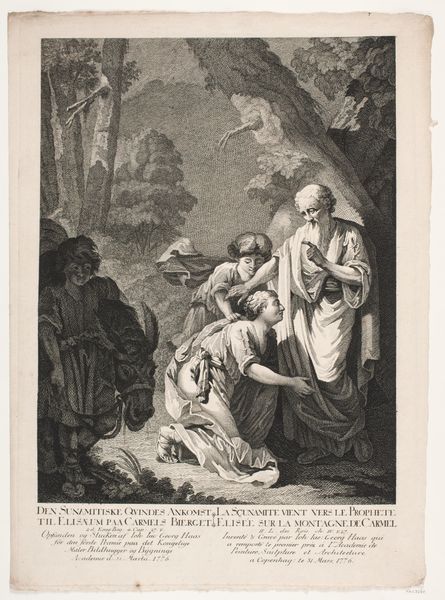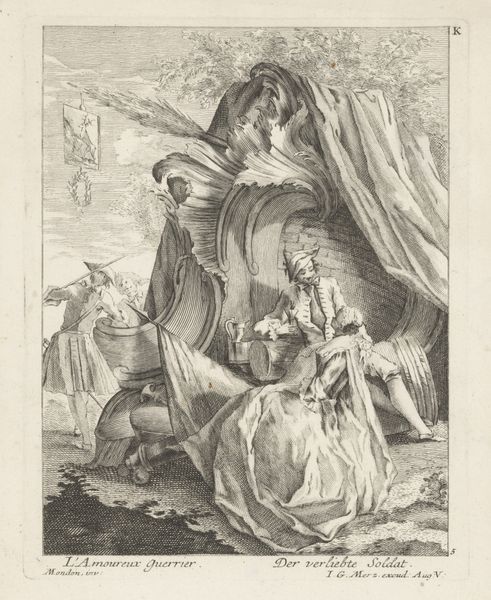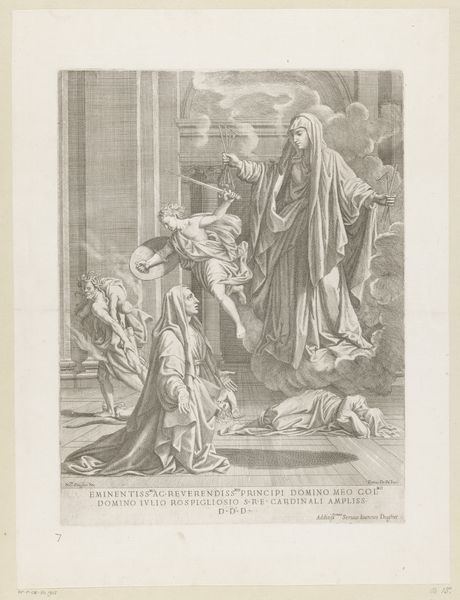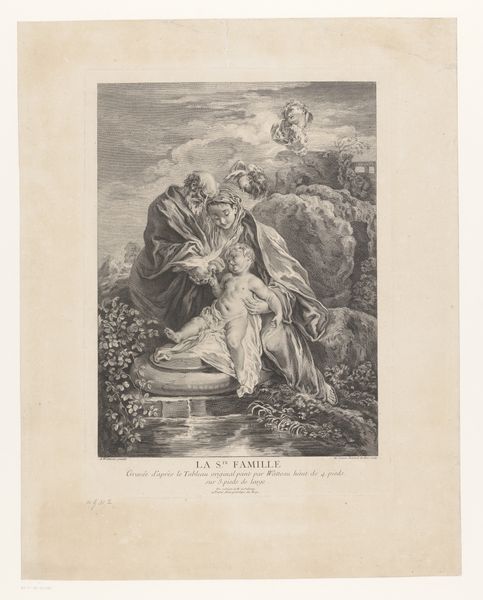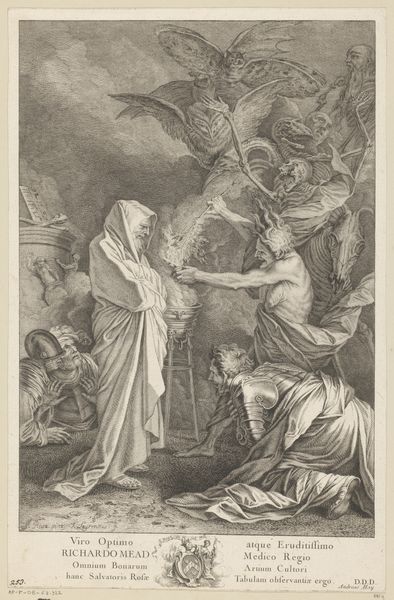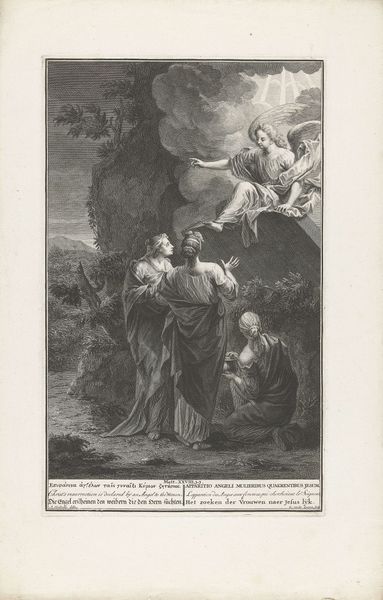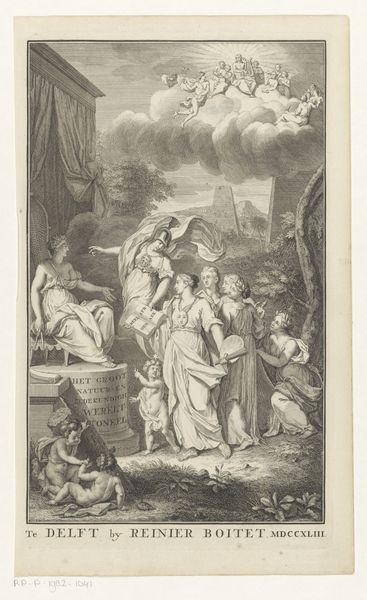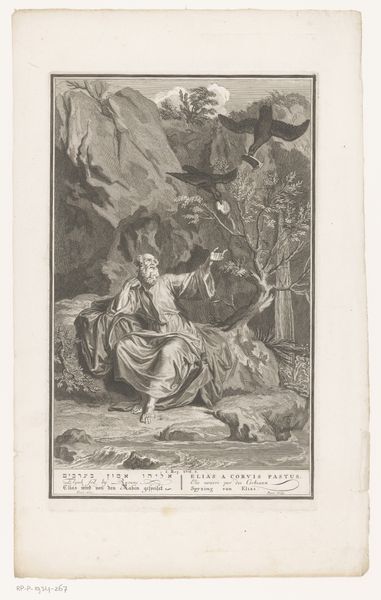
print, engraving
#
toned paper
#
narrative-art
#
baroque
# print
#
old engraving style
#
figuration
#
history-painting
#
engraving
Dimensions: height 360 mm, width 222 mm
Copyright: Rijks Museum: Open Domain
Editor: This engraving, "Saul bij de heks van Endor," or "Saul and the Witch of Endor", attributed to Quiryn Fonbonne and dating from about 1690 to 1757, is intriguing! It has a very dramatic, almost theatrical quality created by the strong contrast between light and dark. What compositional choices strike you most? Curator: Immediately, it's the manipulation of light that commands attention. Fonbonne uses chiaroscuro not just for dramatic effect but to structure the narrative. Note how the brightest area focuses on the witch, guiding our eye, while the shadowed figures on the left recede into obscurity. Does the stark contrast affect the way you perceive the thematic structure of the artwork? Editor: It certainly does! The figures cast in shadow almost seem secondary, adding to the sense of foreboding around the central encounter. What about the witch herself? Curator: Indeed, her central position emphasizes her role. However, beyond the iconography, examine the linear quality of the engraving itself. Fonbonne masterfully employs line weight and density to suggest volume and depth within the monochrome medium. How does the formal rendering contribute to your interpretation of the scene's supernatural elements? Editor: I think it amplifies the unearthly mood. The lines seem to vibrate with energy. There are ethereal figures floating at the top of the engraving, rendered with very loose lines. It almost feels like seeing them materialize before your eyes. Curator: Precisely. The manipulation of line is key to its visual and narrative construction. Considering Fonbonne's treatment of light, shadow, and line, how might one situate this print within the broader context of Baroque aesthetics and its engagement with semiotics? Editor: Well, I’ve noticed how meticulously arranged every element is. It has made me appreciate the craftsmanship that defines this kind of narrative composition, while also offering a new view of a biblical passage I thought I knew well. Curator: Agreed. Attending to its structural elements has shown how historical narratives gain new interpretive depth through close visual analysis.
Comments
No comments
Be the first to comment and join the conversation on the ultimate creative platform.
